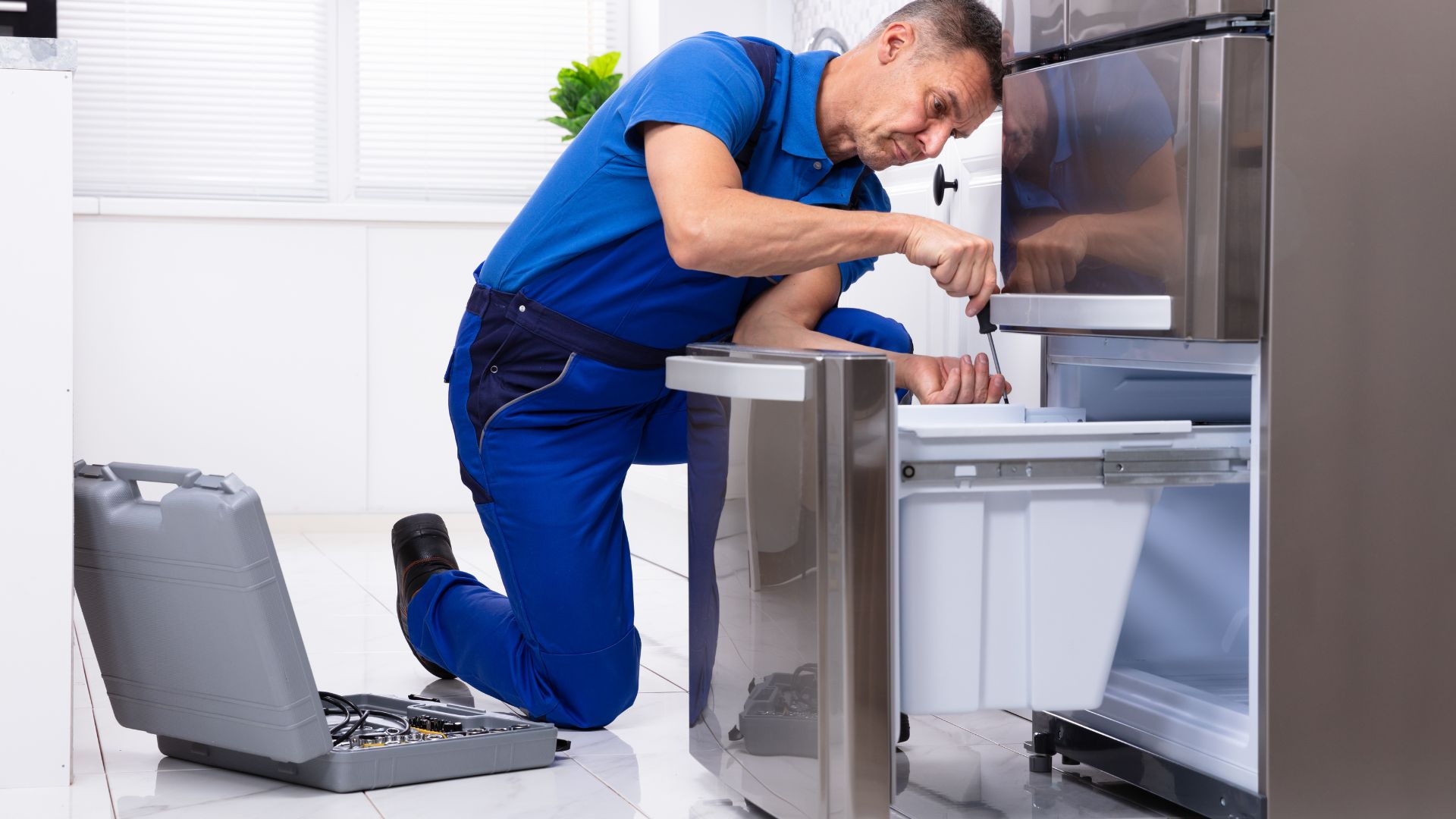Water leaks are never a good sign, especially in electronic appliances. This guide will show you what to do if your Kenmore elite refrigerator leaks.
Kenmore Elite Refrigerator Leaking – Why?
Leaks in a refrigerator show that something has gone wrong. And unfortunately, water leaks have a multitude of sources, including:
1). Defrost Drain
The defrost drain can freeze, becoming clogged. This allows water to flow from the trough. The bottom compartment may contain it for a while, but eventually, the water will trickle to the floor. Confirm your suspicions by inspecting the defrost drain. If the water leaks persist even though you thawed the ice, something else has gone wrong.
2). Frozen Drain Tube
You can blame leaks from the vents at the back on a frozen drain tube. This creates a blockage that prevents the water from draining out of the appliance, hence the leak. Thaw the ice. If the leaks continue, look elsewhere.
3). Punctured Water Tank
Water tanks can develop punctures. Don’t use glue to fix a leaking water tank. The adhesive won’t hold. It takes an expert hand to resolve this issue.
4). Inlet Valve Cracked
The inlet valve is the first component many people check because it brings water to the dispenser and icemaker. Therefore, if it develops a fault, such as a crack, water will leak. If this component is okay, check the connection between the inlet valve and the water supply line. A loose connection at this location can create leaks.
5). Ice Fall Out Of The Dispenser
Ice cubes will melt if you leave them on the floor or in the lower compartments. Some people may interpret this phenomenon as a leak even though it is not a serious cause for concern.
6). Faulty Dispenser
Dispensers are susceptible to leaks, either because of faults and factory defects or air and debris in the system. Leaks in a dispenser are not that difficult to spot via visual inspection.
7). Excess Humidity
How much water do you see? Some people panic because of small trickles and droplets. They don’t realize that refrigerators can sweat because of the excess humidity.
8). Clogged Filter
Modern fridges have filters that sieve the water as it enters the appliance. Filters can cause leaks when they become clogged or damaged. Damaged filter heads will prevent the water from flowing. In other words, the leaks are the least of your problems.
Focus your inspection on the water filter head and housing. Look for cracks or worn-out seals. Don’t make any replacements without double-checking the water filter’s installation. Water can leak because the filter is not securely fitted.
9). Defective Water Lines
These lines carry water to the various components of a refrigerator. Therefore, any harm they suffer can lead to water leaks. If the water lines are okay, inspect the seals and connections for damage.
10). Cracked Drain Pan
Water is always melting from the evaporator coils. You don’t see it because the water collects in the drain pan. Usually, people are unaware of this water because the condenser fan uses warm air to evaporate it. What happens when the drain pan cracks? The water will leak.
How Do I Figure Out Where Is It Leaking From?
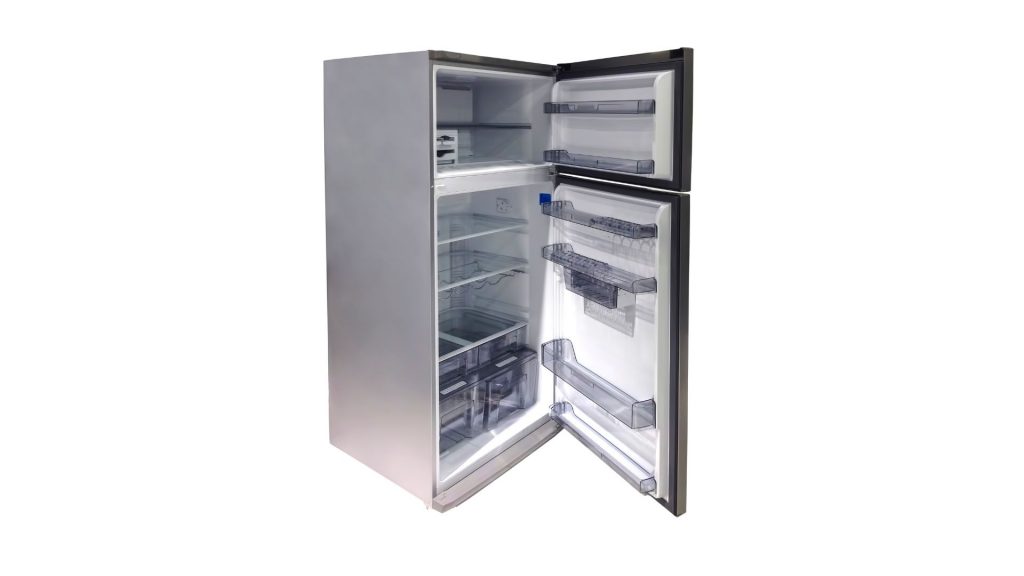
Use the following troubleshooting options to eliminate potential culprits until you identify the source of the leak:
- Check the ice and water dispensers. Do you see water dripping from these compartments? Maybe ice is clogging the dispenser, or ice cubes are routinely falling out and melting.
- Use a level to ensure that the refrigerator is not tilted. If it is, make the necessary adjustments.
- Check the water lines for breaks, tears, and fraying.
- Check the defrost drain for ice. If the drain is blocked, thaw the ice. Hopefully, the problem will dissipate.
- Pull out the drain pan. If it has water, pour it away and inspect the component for cracks. Do you see signs of corrosion?
Don’t troubleshoot the refrigerator without shutting the appliance off. Unplug the fridge from the wall outlet to be on the safe side. You should also remove the food. This allows you to inspect the internal compartment freely.
Kenmore provides decent warranties. Therefore, you can send a leaking Kenmore refrigerator back to the manufacturer. Let them fix the issue. And if they can’t, they will provide a replacement. You don’t have to incur unnecessary repair and replacement expenses.
What Does It Mean if It Is leaking From Water Dispenser?
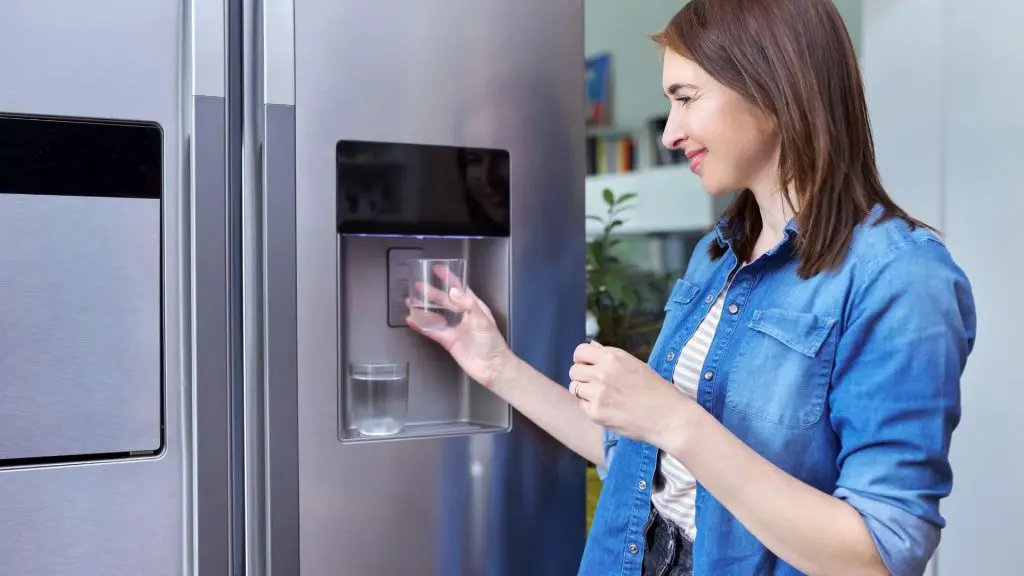
- Minerals from the water have prevented the inlet valve from closing securely. As a result, water continues to drop from the plastic water line.
- The tube running between the water supply and dispenser is damaged.
- Air in the water line creates pressure that keeps pushing water through the opening of the dispenser.
- Faulty water valve.
How To Fix It?
- Replace a faulty inlet valve. Don’t tamper with a dirty valve. You may destroy the component in your attempt to clean it, leading to a worse leak. Ask an expert to inspect it.
- Replace leaking water lines.
- If the fridge has trapped air, run the dispenser for four or five minutes to remove the air.
- Replace the water filter.
It is worth noting that water dispensers are supposed to leak. You should see a few drops whenever you use the dispenser. You should only respond to excess dripping. If the fridge is new, the leaks may dissipate after 24 hours.
What Does It Mean If It Is Leaking From Inside?
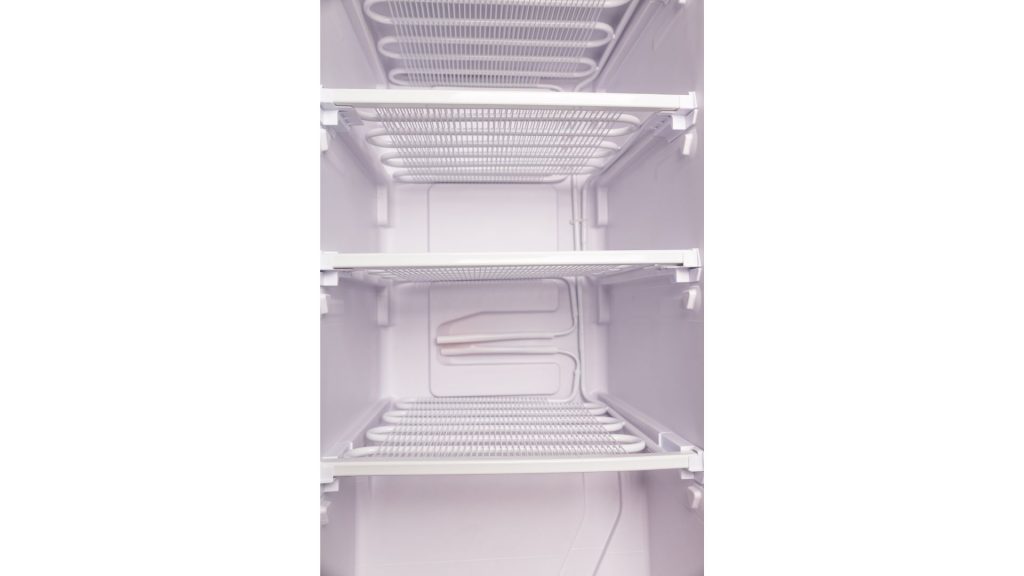
- You have damaged water lines. They transport water to the components that need it. Tears in the water lines will produce internal leaks.
- You may confuse the water pouring out of the drain pan for an internal leak because many people don’t even know that the drain pan exists. They don’t realize that it collects water from the defrost cycle. That water is supposed to be in the drain pan. However, it evaporates after a while. Water will pool below the appliance if the drain pan cracks.
- A frozen and clogged defrost drain will cause an internal leak.
- The water dispenser is leaking because of a faulty water valve and trapped air in the lines.
- The ice maker has a defect.
- The refrigerator is tilted.
How To Fix It?
- Replace leaking water supply lines.
- Replace damaged inlet valves.
- Adjust the level of the fridge. Make sure the front end is higher than the back end.
- Replace a damaged drain pan.
- Thaw the ice in the defrost drain.
- Replace worn-out or damaged door seals.
- Remove trapped air from the water line.
- Thaw the ice from the clogged inlet tube that connects to the ice maker.
What Does It Mean If It Is Leaking From Ice Maker?
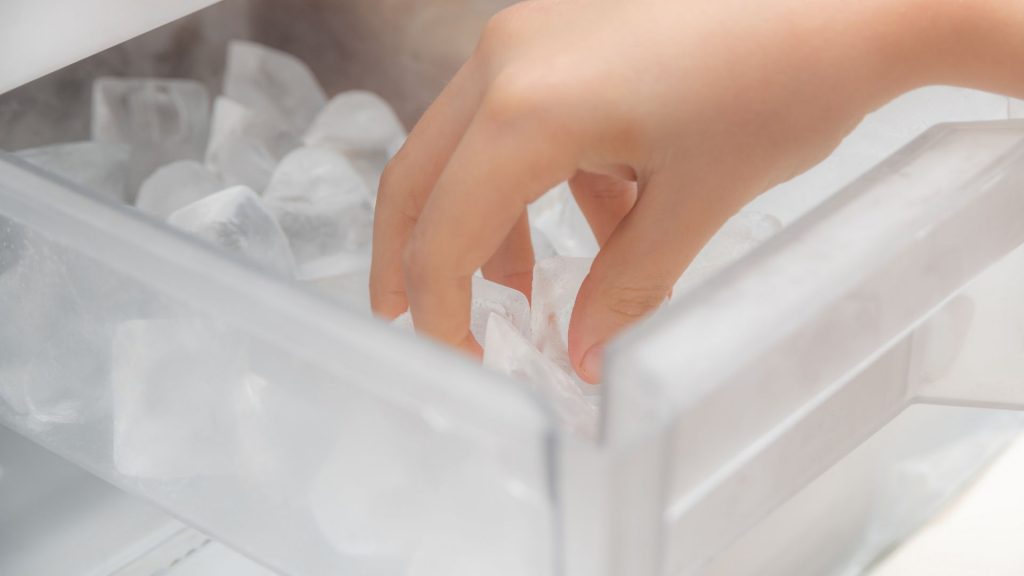
- The water line is damaged.
- The connection between the water line and the dispenser is not secure.
- The drain tube is clogged with ice.
- The Kenmore fridge is tilted.
- The water filter is damaged.
How To Fix It?
- Secure loose connections between the ice dispenser and components such as the water line.
- Replace a faulty water valve.
- Replace a damaged water line.
- If the ice maker is clogged with ice, pour warm water into the chute to thaw it. You can also break the ice manually with a wooden spoon.
- Use a level to adjust the position of the fridge. Use wedges to prevent the appliance from tilting in the wrong direction.
- Thaw a frozen drain.
- Replace filters you have used for six or more months.
What Does It Mean If It Is Leaking From Out Of The Bottom/Underneath?
- The drain pan is at the bottom. Water from the defrost cycle collects here. Water will leak from underneath if the drain pain cracks or becomes clogged with debris. Usually, you don’t have to pour this water away. It evaporates.
- If the drain pan is okay, check the defrost tube. It carries water to the drain pan. Debris, clogging, and damage can cause the defrost tube to leak.
- Refrigerators with dispensers have water lines that transport the water. If they tear or break, water will leak.
How To Fix It?
- Take the drain pan out and look for cracks. If the pan is dirty, you should clean it. Otherwise, replace the component.
- Replace damaged water lines. You need an expert to locate the torn water lines. Hopefully, they can solve the problem by securing the connections. Otherwise, you need new tubing.
- Use hot water to thaw the blocked defrost tube. Hot water will also flush debris out of the tube. This assumes that clogging is your only problem. Some defrost tubes have permanent damage. They must be replaced. Sometimes, carelessly thawing the defrost tube will damage it, especially if you use boiling water. Hot water is okay. Boiling water will do more harm than good.

